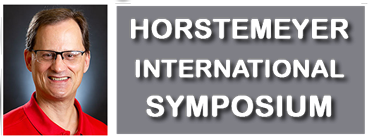



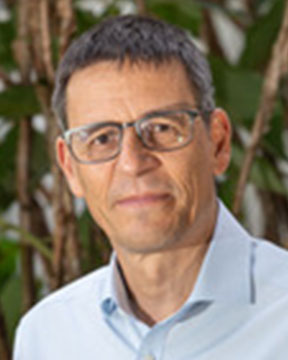
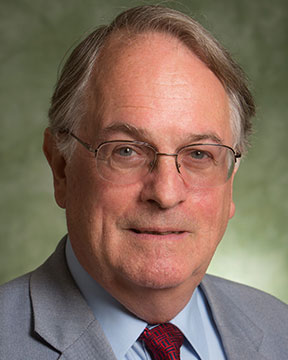
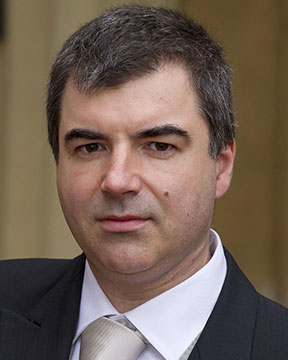
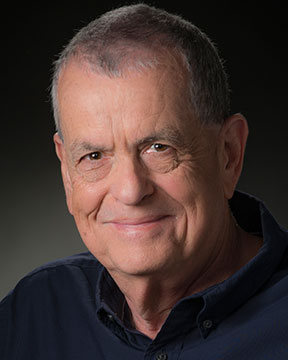
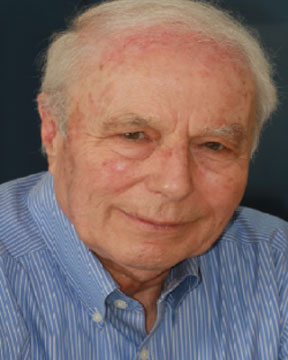


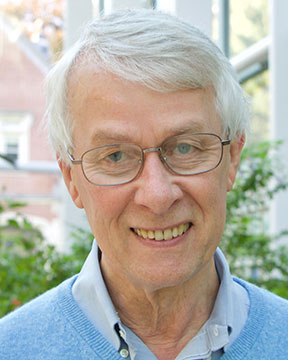
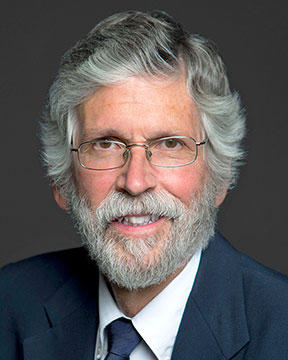


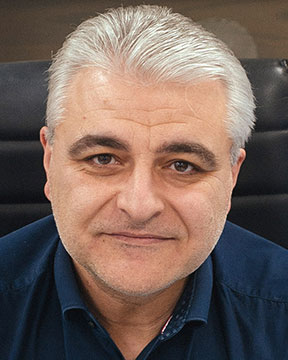










| SESSION: CorrosionMonAM-R7 | Macdonald International Symposium (Intl Sympos. on Corrosion for Sustainable Development) |
| Mon. 28 Nov. 2022 / Room: Andaman 2 | |
| Session Chairs: Raman Singh; Session Monitor: TBA | |
The human activity that we know as “science” is based upon two broad philosophies; empiricism and determinism. Empiricism is the philosophy that everything that we can ever know we must have experienced, whereas determinism posits that the future can be predicted form the past upon the basis of the natural laws, which are condensations of all previous scientific experience. Viewed in this light, “science” is clearly the process of conversion from empiricism to determinism. Thus, observations (experiments) are made empirically and the results eventually lead to the formulation of new “natural” laws that then are used to constrain deterministic prediction to what is “physically real”. The impediment to this process is “complexity”, which is measured by the number of degrees of freedom in a system. Complexity can be likened to a fog that limits the field of view and obscures physico-chemical detail. The advancement of science occurs via the lifting of that fog. Thus, complexity is overcome by using more discerning tools and sensors. Perhaps the greatest tool in lifting the shroud of complexity has been the development of the high-speed, digital computers that are now capable of performing billions of individual calculations per second. Computers have been responsible for the creation of more scientific knowledge over the past several decades than had been created in all preceding human history. Consider the problem of describing the behavior of a cluster of atoms, which in physics is commonly referred to as a “many bodied problem”. The Hamiltonian, which describes the motion of each atom in the system, for a system of 100 atoms was an insurmountable challenge just a few decades ago; now, using supercomputers, clusters of tens of thousands of atoms can be accurately described. Another useful concept in combatting the debilitating effect of complexity is the average property approximation. Consider the problem of describing the propagation of a crack in a piece of iron. For convenience, let us assume that the mass of the metal is 55.5 g. This piece of metal contains 6.023x1023 atoms and formulation of the Hamiltonian to describe the motion of all atoms in the system, including those atoms at the tip of the crack that are responsible for crack advance, is clearly an impossible task, even with today’s most powerful super computers. However, crack advance is due only to the motion of a relatively few atoms in the vicinity of the crack tip. The remainder of the piece of iron, whose atoms are not involved in the crack advance process, may be assigned “average” properties, thereby greatly decreasing the complexity of the system. It is this approximation that enables deterministic description of physico-chemical phenomena in practical systems (e.g., crack propagation in nuclear power plant coolant piping). An example of the deterministic prediction of damage due to stress corrosion cracking (SCC) in reactor piping is shown in Figure 1, in which the depth of a crack in Type 304 stainless steel in the core shroud of a Boiling Water (Nuclear) Reactor is displayed as a function of various operating protocols as might be chosen by the reactor operator. Thus, “normal water chemistry” is the standard operating protocol for a BWR in which no attempt is made to modify the redox properties of the coolant (water at 288 oC) so as to reduce the driving force of the crack, which is the corrosion potential of the steel. Under this protocol the crack grows by about 2.2 cm over the operating period of ten years. The addition of hydrogen to the coolant water in the Hydrogen Water Chemistry (HWC) operating protocol that results in a reduction in the driving force for crack propagation and hence in the crack propagation rate, was originally developed in Sweden as a means of combatting SCC in the coolant circuits of BWRs. As seen, if HWC is implemented at the start of operation, the increase in crack length is reduced to 0.6 cm, which is substantial with significant financial implications for the operator and consumer alike. On the other hand, if HWC is implemented after five years, the crack is predicted to grow by 1.9 cm, which is only moderately better than if HWC had never been implemented at all. The reader will note that this “law of decreasing returns” situation is due to the shape of the crack length vs time correlation, corresponding to a decrease in the crack growth rate as the crack grows. This important feature was predicted by deterministic modeling and has since been verified experimentally. The reader will also note that the crack length vs time curves are not smooth. The discontinuities are not due to calculational error but reflect various outages of the reactor, including refueling outages. From the above, the reactor operator might conclude that, if HWC is to be implemented, then it should be put into effect as soon as possible, if the maximum benefit is to be realized. This example illustrates the benefits of deterministically modeling corrosion phenomena in “real world” scenarios.
| SESSION: CorrosionMonPM1-R7 | Macdonald International Symposium (Intl Sympos. on Corrosion for Sustainable Development) |
| Mon. 28 Nov. 2022 / Room: Andaman 2 | |
| Session Chairs: TBA Session Monitor: TBA | |
The mechanisms for Redox reactions (R O + ne-) occurring on metal substrates generally assume a bare metal surface but bare metal surfaces only exist on the platinum group metals and then only at sufficiently negative potentials (e.g., for Pt < -0.15 VSHE) that a barrier oxide layer cannot form, even as a metastable phase. At higher potentials, the surfaces are invariably covered with a point-defective, barrier oxide layer (bl) upon which may exist a generally non-point defective, precipitated outer layer [e.g., Pt/PtO/Pt(OH)2. For Pt, the barrier layer is found to be a n-type semi-conductor having the general formula Pt1+xO1-y, where positive values of x, y < 0.1 indicate the presence of metal interstitials (〖Pt〗_i^(2+)) and oxygen vacancies (V_O^(∙∙)), both of which are electron donors. No hint of p-type behavior was observed, demonstrating the metal vacancy (V_Pt^2') is a minority species. The surface vacancies have been postulated to act as reaction sites at the barrier layer/solution interface and the surface oxygen vacancy has been postulated as providing the adsorption sites for the oxygen electrode reaction (OER) on passive titanium. This invariably links the reaction mechanism of the redox reaction to the defect structure of the substate bl oxide. However, the bl also represents a barrier to electron transfer. For sufficiently thin bl oxides (< 3 nm), charge carrier transfer between the metal and the redox reaction site that occurs at the bl/solution interface is postulated to occur by direct (resonant) quantum-mechanical tunneling but for thicker bls (> 5 nm), the oxygen vacancy, which is present in all oxide films that grow into the metal, acts as a quantum well having quantized energy levels. In these cases, tunneling between neighboring oxygen vacancies is indirect and because of the presence of a high electric field (commonly (1-3)x106 V/cm precludes occupied/empty energy levels between neighboring vacancies of the same energy noting that tunneling is an isoenergetic process. Accordingly, tunneling is envisioned to involve “virtual” states in which the tunneled electron temporarily reside as it loses energy to the lattice and relax to a quantized state in a neighboring vacancy that in turn is isoenergetic with the next virtual state. In essence, this is a “hopping” mechanism in which the hopping sites are alternating oxygen vacancies and the “virtual states”. Clearly, the probability of quantum-mechanically mediated hopping between an oxygen vacancy and the virtual state that is at the same location as the neighboring oxygen vacancy is a very sensitive function of the concentration of oxygen vacancies in the bl as indicated by the expression for the probability of transfer, Pr~exp(-β ̂L), where β ̂ is the tunneling constant, and L is the tunneling distance. The theory of the electrochemical kinetics of redox reactions has been modified to accommodate reaction on passive surfaces and to involveme surface defects (primarily oxygen vacancies) in the reaction mechanism. This requires to use of the Point Defect Model (PDM) to calculate the concentration of the appropriate vacancy at the bl/s interface and to estimate the thickness of the bl as a function of voltage, which are then used to modify the Generalized Butler-Volver equation, to define the exchange current density in terms of the standard exchange current density, and to define the standard state as the hypothetical bare metal surface. The application of this revised theory for redox reactions on passive surfaces is illustrated by the electrochemistry of carbon steel in hydrogenated alkaline solutions.
| SESSION: CorrosionMonPM1-R7 | Macdonald International Symposium (Intl Sympos. on Corrosion for Sustainable Development) |
| Mon. 28 Nov. 2022 / Room: Andaman 2 | |
| Session Chairs: TBA Session Monitor: TBA | |
Our civilization is based upon the reactive metals, such as aluminum, iron, nickel, chromium, titanium, and so forth. All these metals and their alloys react with oxygen and water with considerable negative changes in the Gibbs energy, indicating that the reactions are thermodynamically spontaneous and many of the reactions occur at considerable rates; some violently so (e.g., the burning of Al or Mg in air). In other cases, the reaction is muted, allowing the metals and their alloys to be used in fabricating machines that require close tolerances. The resulting corrosion exacts an enormous cost on society that has been estimated at about 3.5 % of the GDP for industrialized countries like the US. Given that the GDP of the US is about $21 trillion ($21x1012), the annual cost of corrosion is approximately $735 billion. On a worldwide basis, the cost is estimated to be $2.2 trillion. Corrosion is an electrochemical process comprising at least two partial reactions, one of which is the electrodissolution (destruction) of the metal or alloy substrate to produces electrons that are quantitatively consumed by a cathodic partial reaction, such as the reduction of oxygen or the evolution of hydrogen via the reduction of water. The rate of the electrodissolution reaction in the active state increases exponentially with the electrochemical potential, so that even modest changes in the potential can result in massive changes in the rate. Fortunately, once the potential exceeds a critical value, known as the Flade or passivation potential, the rate drops precipitously to values that are sufficiently low (< 1 µm/a) that the metals and their alloys may be used to fabricate machines that retain their precise dimensions over useful service lifetimes (40 – 100 a). This if known as the passive state in which the thermodynamically highly reactive metals attain kinetic stability because of the formation of a oxide film on the surface that is commonly no more than 1-3 nm thick and that separates the reactive substrate from the corrosive environment. In this presentation, I will review the scientific basis for the phenomenon of passivity within the framework of the Point Defect Model (PDM) and define precisely the condition that must be achieved for passivity to occur. Indeed, the occurrence of our metals-based civilization can be expressed as a simple inequality that has profound implications for life as we know it. I will also discuss how the PDM predicts the breakdown of passivity that is responsible for the $2.2 trillion annual cost of corrosion. These predictions will be illustrated with practical examples, such as the corrosion and failure of airframes, the failure of oil/gas pipelines, and the failure of nuclear reactor coolant piping.
| SESSION: CorrosionMonPM2-R7 | Macdonald International Symposium (Intl Sympos. on Corrosion for Sustainable Development) |
| Mon. 28 Nov. 2022 / Room: Andaman 2 | |
| Session Chairs: Harpreet Singh; Session Monitor: TBA | |
The scientific viability of the Anthropogenic Global Warming Hypothesis (AGWH) has been evaluated in terms of the Causality Principle (CP), which is the foundation of scientific philosophy. Based on the available experimental data, the relationship that is expressed by the AGWH (that rising CO2 concentration in the atmosphere is responsible for global warming (GW) as reflected in the rise in temperature) is noncausal because the alleged cause (the change in the atmospheric [CO2]) lags the change in the temperature in the experimental record, in violation of the CP. Since the AGWH represents the foundational hypothesis of current climate science (CS), it is concluded that CS and the models that have been developed, based on the AGWH, to predict future GW lack a valid scientific basis. In assessing this issue, the colloquial form of the CP is most appropriate especially when presenting it to a general audience. In this form, the CP may be expressed as: “Every effect has a cause, and the cause must precede the effect”. Furthermore, “for a complex system comprising a series of processes, if any step is non-causal then so is the entire process”. It is important to note that the CP is independent of the mechanism of the change just as are the Laws of Equilibrium Thermodynamics for which there exists a close parallel. If this were not the case, a process may appear to be causal via one mechanism but noncausal via another, even though the initial and final states or the declared cause and effect had not changed; an intolerable conflict and one via which al processes could be declared to be “causal” for convenience and in defiance of common sense.


